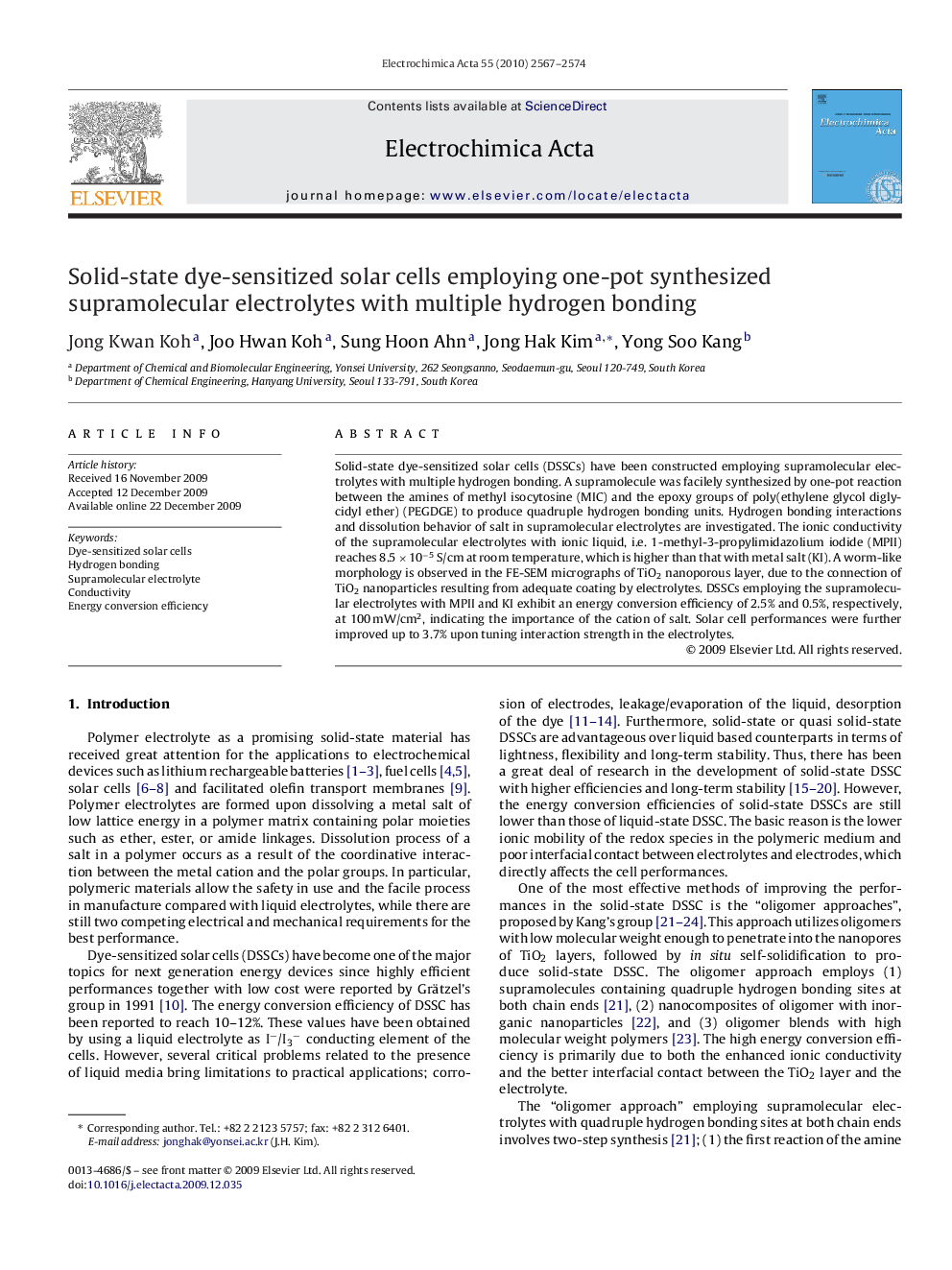| Article ID | Journal | Published Year | Pages | File Type |
|---|---|---|---|---|
| 191900 | Electrochimica Acta | 2010 | 8 Pages |
Solid-state dye-sensitized solar cells (DSSCs) have been constructed employing supramolecular electrolytes with multiple hydrogen bonding. A supramolecule was facilely synthesized by one-pot reaction between the amines of methyl isocytosine (MIC) and the epoxy groups of poly(ethylene glycol diglycidyl ether) (PEGDGE) to produce quadruple hydrogen bonding units. Hydrogen bonding interactions and dissolution behavior of salt in supramolecular electrolytes are investigated. The ionic conductivity of the supramolecular electrolytes with ionic liquid, i.e. 1-methyl-3-propylimidazolium iodide (MPII) reaches 8.5 × 10−5 S/cm at room temperature, which is higher than that with metal salt (KI). A worm-like morphology is observed in the FE-SEM micrographs of TiO2 nanoporous layer, due to the connection of TiO2 nanoparticles resulting from adequate coating by electrolytes. DSSCs employing the supramolecular electrolytes with MPII and KI exhibit an energy conversion efficiency of 2.5% and 0.5%, respectively, at 100 mW/cm2, indicating the importance of the cation of salt. Solar cell performances were further improved up to 3.7% upon tuning interaction strength in the electrolytes.
